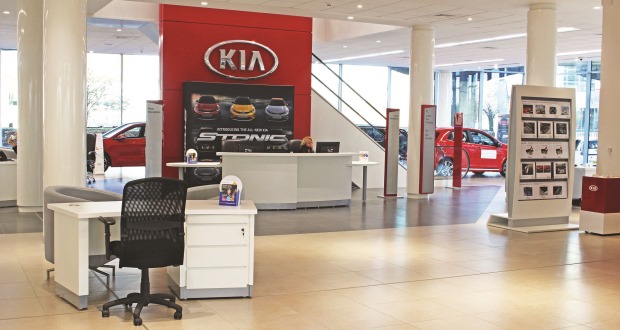 These are good times at Kia. Against a downward curve of new car registrations so far this year, year-on-year lower by 7.5% across the industry over the first nine months, Kia is one of very few to have managed an increase. It has bucked the trend with sales up by 2.8%.
These are good times at Kia. Against a downward curve of new car registrations so far this year, year-on-year lower by 7.5% across the industry over the first nine months, Kia is one of very few to have managed an increase. It has bucked the trend with sales up by 2.8%.
While WLTP and other factors sent the September new car market plummeting by over 20%, Kia’s performance grew by almost 3.8%. The network is basking in the glow of this summer’s NFDA Dealer Attitude Survey results, in which it took top spot, beating past winner Toyota into second place.
Then at the recent Paris Motor Show, Kia enjoyed elevation to the number one show hall and celebrated with the arrival of several new models. Soon to join the recently launched and well-received Ceed hatchback are the new Ceed GT, Proceed and electric E-Niro.
Kia UK managing director Paul Philpott acknowledges that when it comes to success, product plays a critically important role.
“It’s a pretty exciting time for Kia in a challenging external environment right now,” he said. “We’re blessed with the best product range we’ve ever had, and it only gets better. We’re heading for a record of just over 95,000 new cars this year, marginally ahead of target, so we are on track.”
The growth has been driven by the steady tide of new models arriving at Kia, notably the Stonic small SUV and Stinger sports model that have given the company fresh market traction this year. They were joined in August by the Ceed – happily renamed to shed the irksome apostrophe of its predecessor – and new Sportage.
 So Kia’s dealers, all 192 of them run by 119 partners, should have good reason to be happy. Philpott isn’t complacent about that, but is confident they’re in a good place. “Network profitability is up about 5% on last year, so they’re making more money this year, aftersales business is strong, used car business is growing, the network is in good health.
So Kia’s dealers, all 192 of them run by 119 partners, should have good reason to be happy. Philpott isn’t complacent about that, but is confident they’re in a good place. “Network profitability is up about 5% on last year, so they’re making more money this year, aftersales business is strong, used car business is growing, the network is in good health.
“Dealers are in this for profit, they’re largely entrepreneurs or they need to deliver shareholder value. We are running this year at about 1.3% return on sales, which for automotive retailing is an exceptional level. We want it to be higher of course, but this will probably be our second best year ever in terms of dealer profitability.”
So Kia is doing better than its parent brand Hyundai. Does that mean a needle match going on between the two. Philpott lightly nudges that aside. The two brands are competitors, he says, much like others. “We are both moving up the league tables, we’re now not that far behind the likes of Toyota and Nissan, and we’re ahead of others like Peugeot and Renault. Hyundai is just another competitor as far as I’m concerned.”
Although Kia doesn’t engage in the kind of celebrity endorsement some of its rivals do, it is strong on sports sponsorship. Globally the brand backs the Australian tennis Open championship and the FIFA World Cup. It also sponsors the Europa League, and in the UK supports Surrey County Cricket Club and the Kia Oval. As well as increasingly getting into women’s cricket.
Why so? “Because the importance of women in the car buying process is critical, and we now sponsor the England Women’s Cricket team. We are really trying to position ourselves as a gender neutral brand, one that appeals equally to men and women.”
Much more new product is coming. New Kia Motors Europe CEO, Swiss-born Emilio Herrera, is six months into the job and is steering the company to reach half a million cars a year across the continent. Over the next seven years, by 2025, he will oversee 16 new models coming to Kia showrooms. There will be five hybrids, five plug-in hybrids, five EVs and a fuel-cell model due for launch in 2020. Although not yet decided, he is looking at potential expansion for Kia’s Zilina factory in Slovakia, and including the potential to build electrified models there.
For the UK, Philpott believes the road to an EV future will be gradual and progressive, with no sudden step-change. But he says it’s encouraging that over the last 12 to 18 months, residual values of electric cars like the Nissan Leaf, Renault Zoe and Kia Soul have all been improving, up by around five percentage points.
“A move from 30 to 35% on RVs is quite a significant change, and shows there is beginning to develop now a used car market in electric vehicles, which there needs to be to give more people the confidence to buy into a new technology.”
